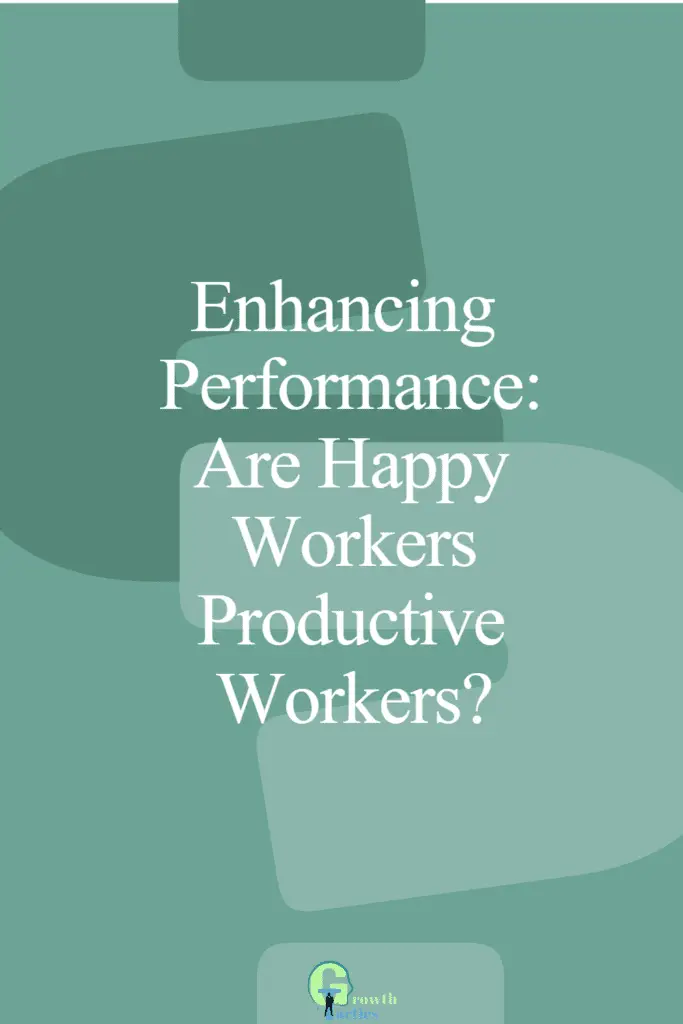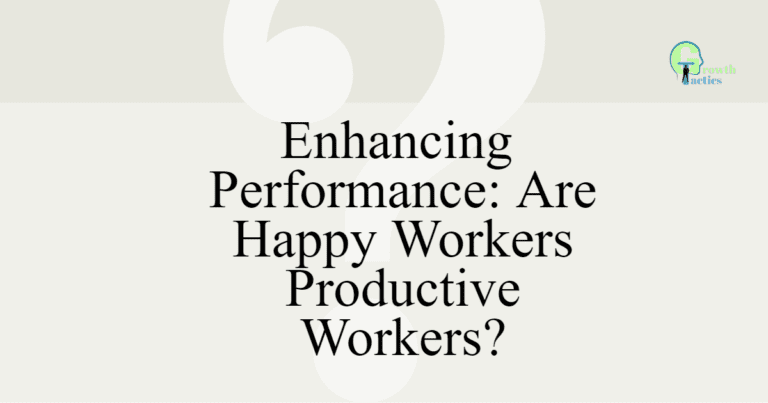Research has shown a strong correlation between employee happiness and productivity, suggesting that happy workers are more likely to be productive workers. In this article we’ll explore the relationship between employee happiness and productivity. Highlighting the benefits and strategies for cultivating a happy work environment.
By prioritizing employee happiness, organizations can enhance productivity and create a positive and thriving workplace culture.
Jump To Section
The Relationship Between Employee Happiness and Productivity
When employees are happier, they tend to be more engaged, motivated, and committed to their work. This, in turn, leads to increased performance and output.
One study conducted by the University of Warwick found that happy employees are more productive by approximately 12%. The research, which included over 700 participants, examined the impact of happiness on work performance. It revealed that happier employees demonstrated higher levels of creativity, problem-solving skills, and overall job performance.
Furthermore, a study conducted by the Saïd Business School at the University of Oxford found that happiness at work not only promotes higher productivity but also leads to better customer service and increased customer satisfaction. When employees feel happier, they are more likely to provide better service, exhibit positive attitudes, and go the extra mile to meet customer needs.
Creating a positive work environment that prioritizes employee happiness can have a significant impact on productivity. Organizations can achieve this by providing learning opportunities, offering wellness programs, fostering strong communication channels, and recognizing and rewarding outstanding performance. When employees feel valued, supported, and happy, they are more likely to perform at their best and contribute to the overall success of the organization.
In the next sections, we will explore the factors that influence employee happiness and the various strategies organizations can implement to cultivate a happier workplace environment. By emphasizing the importance of happiness and productivity, organizations can unlock the potential of their employees and create a thriving work culture.
Factors Influencing Employee Happiness
Employee happiness is influenced by various factors, both personal and organizational. While you can’t make every employee happy, there are many areas you can address to create an overall happier work environment. Here are some factors that have a significant impact on employee happiness:
Factor 1: Work-Life Balance
Work-life balance is a crucial factor that affects employee happiness. Organizations that offer more flexible work arrangements, such as telecommuting or flexible hours, tend to have happier employees. When employees can effectively balance their personal and professional lives, they feel less stressed and overwhelmed, leading to higher job satisfaction.
Factor 2: Job Security
Job security is another factor that strongly influences employee happiness. When employees feel secure in their jobs and believe their role is essential to the organization, they are more likely to feel fulfilled and motivated. On the other hand, high turnover rates or fear of job loss can lead to poor morale and low job satisfaction.
Factor 3: Positive Work Environment
The work environment also plays a significant role in employee happiness. A positive work environment is one in which employees feel empowered and supported, have opportunities to develop their skills, and are recognized and rewarded for their contributions. Additionally, a safe and healthy work environment that prioritizes physical and mental wellbeing can contribute to happier employees.
Factor 4: Communication and Collaboration
Effective communication and collaboration among team members and between employees and management are crucial for employee happiness. When employees feel they are valued and listened to, they are more likely to be engaged and committed to their work. A workplace that fosters open communication and collaboration can also enhance teamwork and promote a sense of community among employees.
Factor 5: Fair Compensation and Benefits
Fair compensation and benefits are essential for employee happiness. When employees are compensated fairly for their work and have access to meaningful benefits such as healthcare, retirement savings plans, and paid time off, they are more likely to feel valued and satisfied with their job.
By addressing these factors, organizations can create an environment that prioritizes employee happiness and wellbeing. In the next section, we will discuss strategies for cultivating a happier workplace environment.
Strategies for Cultivating Happiness in the Workplace
To cultivate happiness in the workplace, encourage work-life balance, foster a positive work environment, provide learning opportunities, and recognize employee achievements. These strategies boost employee satisfaction, engagement, and productivity, creating a thriving and supportive workplace culture.
1. Encourage Work-Life Balance
Promote a healthy work-life balance by offering flexible work arrangements, such as remote work options or flexible hours. Encourage employees to take breaks and vacations to recharge and avoid burnout. Demonstrate a supportive attitude towards work-life balance to foster happier and more fulfilled employees.
2. Foster a Positive Work Environment
Create a positive work environment by promoting open communication, trust, and collaboration. Encourage teamwork and provide opportunities for employees to bond and connect. Support a culture of respect and appreciation, where employees feel valued and acknowledged for their contributions.
3. Provide Learning and Growth Opportunities
Invest in employee development and provide opportunities for learning and growth. Offer training programs, workshops, or mentorship initiatives to help employees enhance their skills and advance their careers. Supporting professional development can increase employee satisfaction, engagement, and loyalty.
4. Recognize and Reward Achievements
Regularly recognize and reward employees’ achievements and contributions. Implement an employee recognition program that celebrates milestones, outstanding performance, and innovative ideas. Showing appreciation reinforces positive behavior and motivates employees to continue striving for excellence.
5. Promote Wellness Initiatives
Implement wellness initiatives to support employees’ physical and mental wellbeing. Offer wellness programs, resources, and activities such as fitness challenges, mindfulness workshops, or access to counseling services. Prioritizing employee wellbeing can lead to increased happiness and overall job satisfaction.
6. Empower Employees and Foster Autonomy
Provide employees with autonomy and empower them to make decisions and take ownership of their work. Encourage innovation and creativity by giving individuals the freedom to experiment and share ideas. Empowering employees fosters a sense of trust, autonomy, and satisfaction.
7. Foster Positive Relationships and Communication
Promote positive relationships and effective communication throughout the organization. Encourage regular team-building activities, engage in active listening, and provide regular feedback. Create channels for employees to voice their opinions, suggestions, and concerns, fostering a culture of inclusivity and collaboration.
8. Create a Supportive Leadership Style
Managers and leaders play a crucial role in cultivating happiness in the workplace. Practice supportive leadership by providing guidance, mentoring, and support to employees. Help them grow, understand their career aspirations, and align their goals with those of the organization.
9. Foster a Sense of Purpose
Help employees understand the purpose of their work and how it contributes to the organization’s overall mission and goals. Communicate the impact of their contributions and how it positively affects customers, communities, or society. When employees find meaning in their work, they are more likely to experience happiness and job satisfaction.
Overcoming Challenges in Creating a Happy Work Environment
While creating a happy work environment is undoubtedly beneficial, it can come with its fair share of challenges. Here are some common challenges organizations may face and strategies to overcome them:
1. Resistance to Change
One challenge in creating a happy work environment is resistance to change. Some employees may be resistant to new initiatives or may struggle to adapt to a more positive and collaborative work culture. To overcome this challenge, involve employees in the change process from the beginning. Clearly communicate the reasons behind the changes, address their concerns, and provide training and support to facilitate the transition.
2. Lack of Resources and Budget Constraints
Limited resources or budget constraints can pose challenges when trying to implement happiness-boosting initiatives. To overcome this challenge, explore cost-effective solutions. For example, instead of expensive wellness programs, consider organizing low-cost activities like walking groups, team-building games, or sharing resources for stress management. Additionally, make a business case for investing in employee happiness, highlighting the potential benefits and return on investment.
3. Communication Barriers
Effective communication is crucial in fostering a happy work environment. However, communication barriers such as language barriers, hierarchical structures, or lack of transparency can impede progress. To overcome this challenge, encourage open and transparent communication. Provide platforms for employees to share their ideas, opinions, and concerns. Implement measures to break down hierarchical barriers, such as regular team meetings, feedback sessions, or anonymous suggestion boxes.
4. High Workloads and Time Pressure
Excessive workloads and time pressure can hinder employee happiness. When employees are overwhelmed, stressed, or constantly racing against deadlines, it becomes difficult to foster a positive work environment. To address this challenge, ensure realistic workloads and set reasonable deadlines. Provide support and resources to help employees manage their time effectively. Encourage work-life balance and consider workload redistribution or process optimization to alleviate pressure.
5. Lack of Leadership Support
Creating a happy work environment requires strong leadership support. However, some leaders may not prioritize employee happiness or may not fully understand its importance. To overcome this challenge, educate leaders about the benefits of a happy work environment and its impact on productivity and retention. Provide training and resources to develop their leadership skills, including how to promote employee happiness. Additionally, showcase success stories and tangible outcomes to demonstrate the value of prioritizing happiness.
6. Sustaining Momentum
Sustaining a happy work environment requires ongoing effort and commitment. It can be a challenge to maintain momentum and avoid complacency after initial improvements. To overcome this challenge, embed happiness into the organizational culture and values. Ensure that employee happiness is consistently prioritized and incorporated into performance evaluations and business strategies. Regularly assess the happiness initiatives and make adjustments based on employee feedback and changing needs.
By recognizing these challenges and implementing appropriate strategies, organizations can navigate the obstacles and create a happy work environment that benefits both employees and the organization as a whole.
So Are Happy Workers Productive Workers
Hopefully this article has shown you the importance of a happier workforce. Cultivating a happy work environment may seem like a lofty goal, but it is achievable. Making everyone happy is impossible but by prioritizing employee happiness and implementing strategies to achieve it, organizations can create a workplace culture that fosters positivity, productivity, and more overall success.
Remember, employee happiness is not a one-time event but an ongoing process that requires dedication, commitment, and effort from everyone involved. So let’s work together to create happier workplaces and enjoy the many benefits it brings.


